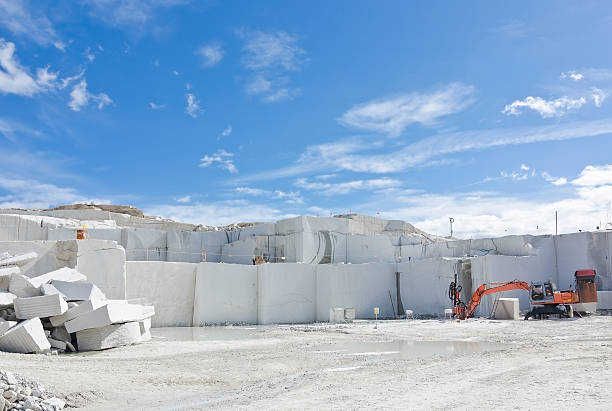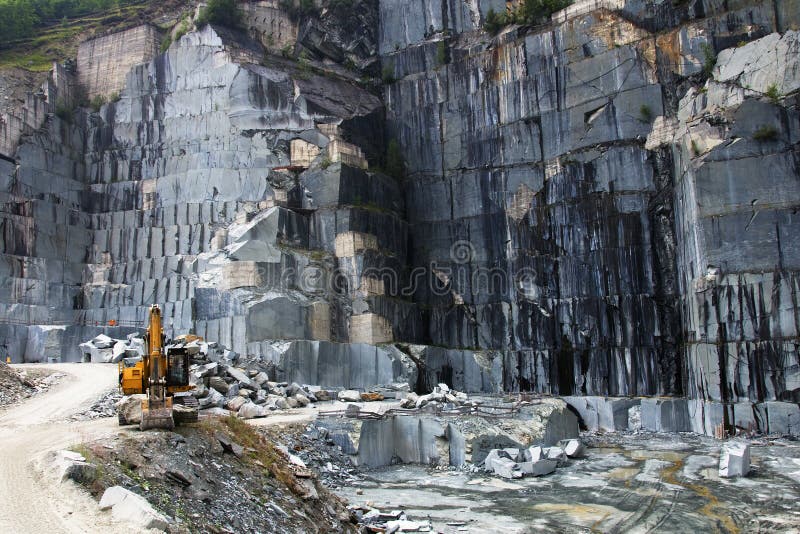The Surprise Treasures: Exploring Granite Quarries in South Africa
The Surprise Treasures: Exploring Granite Quarries in South Africa
Blog Article
Uncovering the Rich Background and Lasting Practices of Granite Quarrying
As we stand on the precipice of discovering the detailed tapestry of granite quarrying, a trip through time exposes not just the physical act of drawing out stone yet additionally the social and historical significance woven into the really fabric of this practice. From the old origins that laid the foundation for contemporary quarrying methods to the sustainable methods that are shaping the future of this market, each chisel mark on granite surfaces tells a tale waiting to be unearthed (granite quarries in south africa). The tradition of granite quarrying stretches far beyond simple removal; it is a testament to human ingenuity, strength, and the long-lasting attraction of this marvelous stone
Ancient Beginnings of Granite Quarrying
Dating back to ancient human beings, the method of quarrying granite has been an essential part of human background and architectural innovation. The earliest evidence of granite quarrying go back to ancient Egypt, where enormous pyramids and complex sculptures were crafted from this sturdy rock. The Egyptians utilized primitive devices to remove granite blocks from quarries, showcasing the significance of this product in their huge constructions.
Moving on in background, the Greeks also made considerable payments to the quarrying of granite. The Greeks used granite in numerous architectural marvels, such as temples and sculptures, demonstrating their ability in shaping and carving this hardy rock. The Romans better refined the techniques of quarrying granite, employing innovative tools like blades and hammers to essence and form granite for their iconic structures.
With the centuries, the practice of quarrying granite has actually evolved, with modern-day technologies boosting effectiveness while keeping the ageless allure of this all-natural rock - granite quarries in south africa. From old people to modern home builders, the heritage of granite quarrying remains to form our globe
Advancement of Quarrying Techniques
The development of quarrying techniques has actually been marked by a continuous progression in the direction of greater effectiveness and accuracy in extracting granite. Early quarrying strategies involved hands-on labor with basic tools such as knives, hammers, and wedges to draw out granite blocks from the earth.
In even more recent times, the introduction of machinery transformed the quarrying industry, making it possible for much faster extraction prices and raised productivity. Technologies such as diamond cord saws, high-pressure water jets, and pneumatically-driven drills have actually come to be common in modern quarries, enabling accurate cutting and reduced waste. Developments in computer-controlled devices and 3D modeling have optimized quarrying operations, leading to very little ecological effect and boosted sustainability practices. As the need for granite continues to rise, the development of quarrying strategies remains essential to conference industry needs efficiently and sustainably.
Cultural Relevance of Granite
Granite holds a profound cultural relevance across numerous worlds because of its enduring visibility in building work of arts and revered monoliths. From the stunning pyramids of Egypt to the intricate makings of the Angkor Wat holy place in Cambodia, granite has been a product of selection for expressing magnificence and durability in cultural heritage. In browse around here old Rome, granite columns adorned holy places and public structures, representing toughness and permanence. The social significance of granite extends beyond its physical qualities; it symbolizes strength, stability, and timelessness, making it an icon of sustaining legacies and traditions.

Lasting Practices in Quarrying
Amidst the rich history of granite quarrying and its cultural relevance lies an expanding focus on sustainable practices within the sector. As ecological awareness and issues regarding source depletion have actually increased globally, home the quarrying sector has progressively embraced lasting techniques to decrease its impact on the environment and bordering areas.

Furthermore, recovery and rehabilitation of quarry websites post-extraction are indispensable to lasting techniques. By bring back quarried locations to an all-natural or beneficial state, such as creating wild animals habitats or recreational spaces, quarriers can balance out the environmental footprint of their procedures and add positively to the local ecosystem.
Heritage of Granite Quarrying
With a historical background steeped in craftsmanship and commercial progress, what withstanding impact has granite quarrying left on the landscape of contemporary society? The tradition of granite quarrying goes beyond plain removal techniques; it has actually formed architectural wonders, city landscapes, and cultural heritage worldwide. The durable nature of granite has actually made it a recommended choice for monuments, structures, and facilities, standing as a testament to the skill and creativity of quarry employees throughout generations.
Additionally, the economic footprint of granite quarrying can not be overlooked. The industry remains to give employment possibility and drive regional economic climates in areas where granite removal prevails. It has actually also stimulated technological developments in quarrying techniques and equipment, resulting in more reliable and sustainable methods.
In terms of sustainability, the heritage of see this site granite quarrying consists of initiatives to reduce environmental influences through improvement jobs and accountable resource management. By stabilizing economic interests with environmental stewardship, the market makes every effort to ensure that future generations can remain to gain from this enduring natural deposit.
Final Thought

Report this page